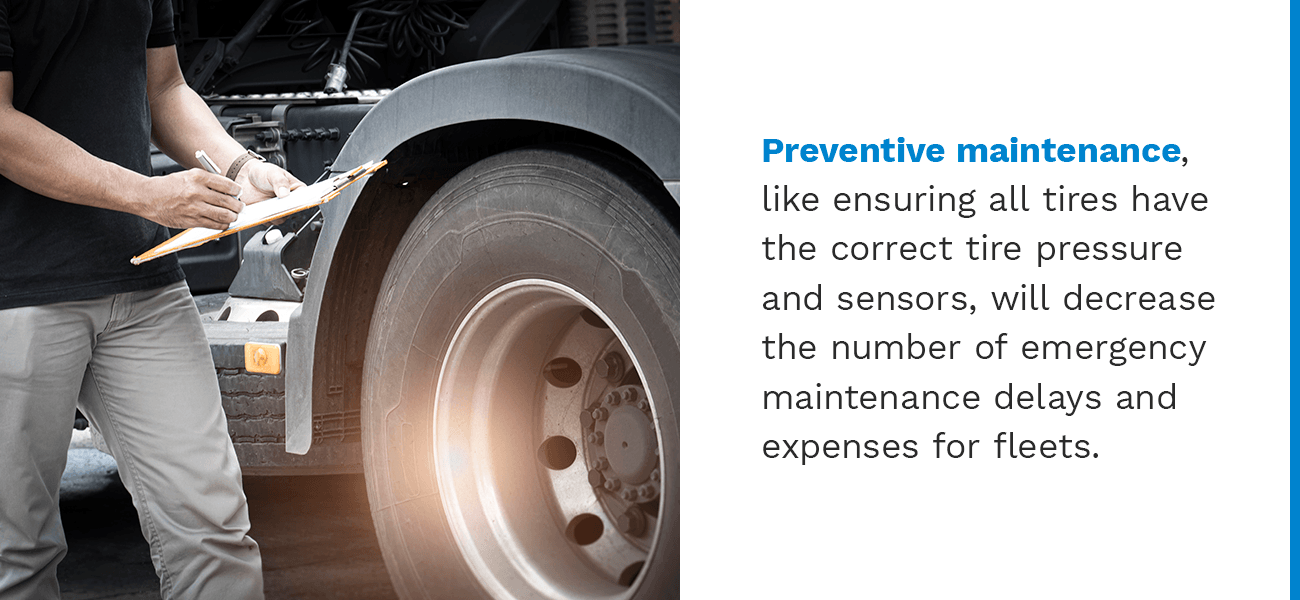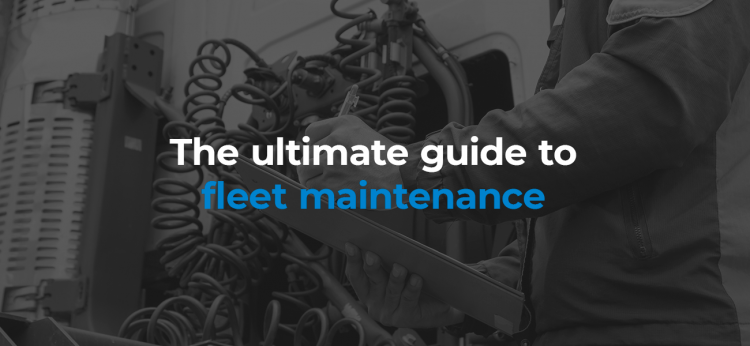Preventive vs. Predictive Fleet Maintenance
Fleet maintenance is a method of monitoring equipment and vehicles to service them before smaller problems cause large malfunctions or breakdowns. Preventive and predictive maintenance both work to prevent breakdowns and expensive repairs, but there are some differences between them. Preventive maintenance focuses on regular, continuous inspections and repairs, while predictive maintenance focuses on detecting potential issues and repairing parts only when needed. Learn more about preventative and predictive fleet maintenance to find the best option for your business.
What is Preventive Fleet Maintenance?
Preventive maintenance -- also known as preventative fleet maintenance -- is scheduled on a regular basis to maintain the current working parts of a vehicle or piece of equipment. This type of maintenance occurs at regular intervals to keep parts working for as long as possible and to prevent problems before they arise. It usually includes vehicle inspection, testing, cleaning, adjustment, lubrication, repair, and sometimes parts replacement.
To perform preventive maintenance, maintenance managers use a checklist for parts that need to be inspected or replaced. They then use this checklist to repair, replace, clean, or calibrate parts. The predetermined steps outlined on the checklist are scheduled by the manufacturer's recommendation based on certain mileage benchmarks, engine hours, time, and gallons of fuel used.
Preventive maintenance can sometimes hinder productivity if it is not properly planned and prepared because it requires vehicle downtime. The maintenance crew and fleet managers can optimize time by using preventive fleet management software to capture historical records, maintenance logs, mileage, and engine hours. They can then use this information to create a maintenance schedule that doesn't interfere with vehicles while they're in use.
If managers don't inspect and perform maintenance regularly, they can potentially reduce a vehicle's lifespan or make it unsafe to use. Managers can maintain productivity by conducting preventive maintenance on a regular basis and avoiding vehicle breakdowns or necessary repairs.
What is Predictive Fleet Maintenance?
Predictive maintenance occurs as needed, and it is currently the most advanced method of maintenance. It consists of regular inspections to check the condition of all components so fleet managers can repair and replace parts before they cause problems or damage to the vehicle. Fleet managers collect machine operation data and analyze it to catch any issues before they delay production.
Predictive maintenance is data-driven and powered by machine learning. It collects analytics using sensors and other technology to predict when certain vehicle parts will need to be repaired or replaced. Managers attach sensors to vehicles and connect them to software that collects and analyzes data. This type of maintenance requires more technology, but it reduces unnecessary maintenance.
Managers begin predictive maintenance by establishing baselines that tell machine sensors the normal parameters for equipment. This allows the machine sensors to alert managers whenever equipment performs outside of the predetermined normal parameters so mechanics can repair what needs to be repaired.
Different types of predictive fleet maintenance software include:
- Vibrational Analysis: Detects looseness of high-rotating machinery. It can also detect misalignment, bearing wear, and imbalance.
- Sonic Acoustical Analysis: Monitors the lubrication of equipment based on machine friction.
- Ultrasonic Acoustical Analysis: Monitors the friction of electrical equipment because it can detect machine friction based on sounds in the ultrasonic range.
- Infrared Analysis: Monitors temperature and can detect problems related to airflow, cooling, and motor stress.

Preventive vs. Predictive Maintenance
Preventive and predictive maintenance are similar because they both work to increase the reliability of equipment and prevent issues. The difference between them is that preventive maintenance is scheduled on a regular basis, while predictive maintenance is scheduled based on need, and there are pros and cons to both methods. An example of preventive maintenance would be performing an oil change or tire rotation on a vehicle every 3,000 miles. Predictive maintenance could involve lubricating vehicle parts because sensors detect a change in vibration patterns.
The Pros and Cons of Preventive Maintenance
There are various benefits of preventive fleet maintenance. It limits unplanned downtime because it is a proactive method that maintains vehicles on a planned schedule. It also ensures you use vehicles efficiently and prolong their lifespan. However, it is labor-intensive because maintenance managers have to maintain equipment regularly rather than only as needed.
Preventive maintenance sometimes addresses issues that don't exist. It also requires more planned downtime for vehicles and substantial inventory management for replacement parts. Preventive maintenance can also be more challenging because it requires maintenance managers to decide which equipment needs maintenance and how often it needs maintenance to be as cost-effective as possible. Preventive maintenance comes with the risk of over-maintaining equipment, which can cause problems. For example, lubricating a part too much can damage it or the parts around it.
The Pros and Cons of Predictive Maintenance
There are many benefits of predictive fleet maintenance, as well. Like preventive maintenance, predictive maintenance is also proactive and manages issues before they cause damage. Unlike preventive maintenance, however, it improves inventory efficiency because it does not require you to replace parts when they are still functional. Predictive maintenance reduces material and labor costs because you only need to pay for maintenance when needed.
A company that performs predictive maintenance can save 8%-12% more on costs than if they perform preventive maintenance, but it also costs a substantial amount up-front and takes a significant amount of time to implement. To perform predictive maintenance, You may need additional training, resources, and personnel because it is more complex than preventive maintenance and requires an experienced mechanic to detect problems. Depending on your company, you may also need new technology and equipment to collect and share equipment data.
How Fleet Management Software Helps
Fleet management software gives you the ability to catch issues early to prevent expensive repairs and keep your vehicles running smoothly so you can maintain an efficient fleet operation. It detects potential issues so you can repair them before they cause damage. It sends instant notifications so you can view data and schedule repairs even when a vehicle is out on the road.
With fleet management software, you can stay up to date on maintenance so you can maintain a low CSA score. If you fail to maintain records or if you have maintenance violations, your CSA score can increase, but fleet management software can ensure you stay informed and ready for inspections.

Maintain Your Fleet With Fleet Management Software
Fleet management software can help you keep track of your vehicles, detect potential problems, and schedule repairs before problems arise. Contact Rand McNally Fleet to request pricing on our fleet analytics software, or request a demo to learn more about how our software can help you maintain efficiency in your vehicles. Let our software handle the analytics so you can focus on keeping your vehicles in top shape.
Contact Rand McNally
Request Pricing for Fleet Solutions
We're looking forward to talking with you. Please fill out the form to get started.
Or call us:
+1 (800) 789-6277 (Fleet management, ELD, Asset tracking, Navigation)
+1 (800) 234-4069 x2 (MileMaker/IntelliRoute)
If you are an existing customer and need assistance, please contact your Client Success rep or email fleetsupport@randmcnally.com.
This form is for business-to-business transactions only. It is not for personal consumer use.


